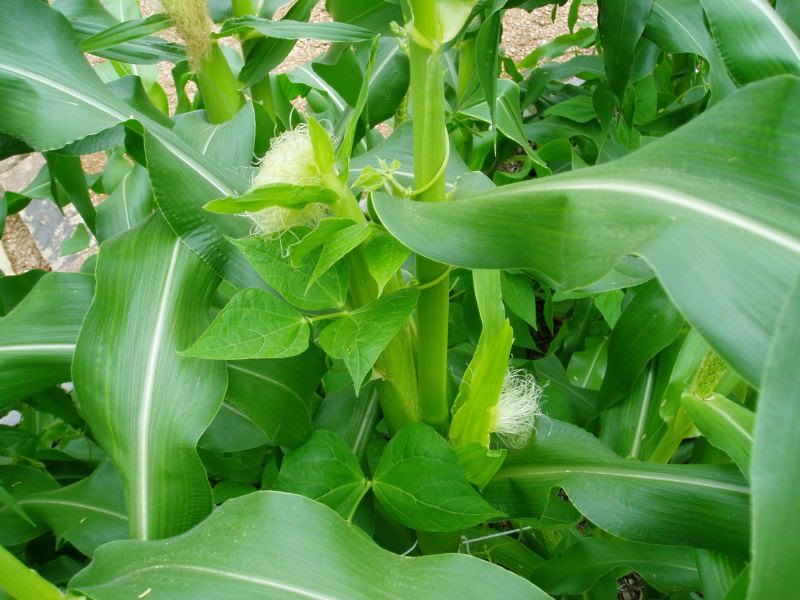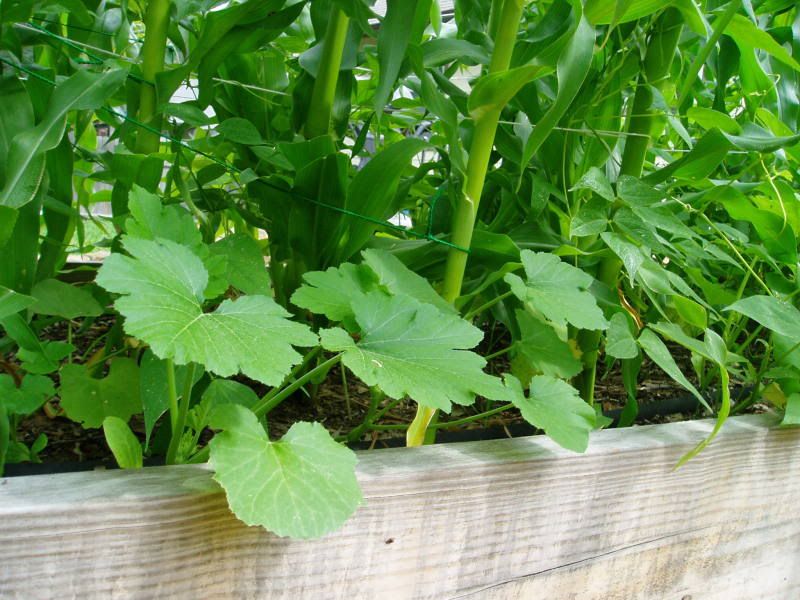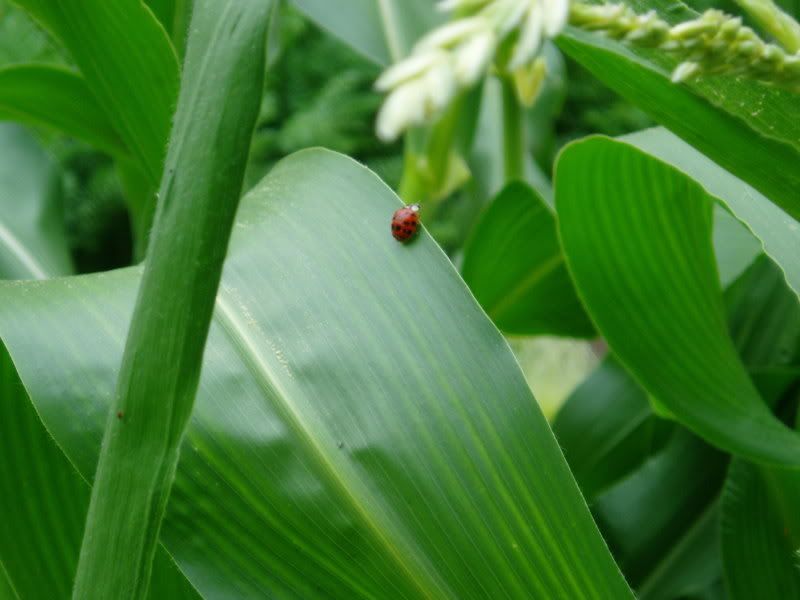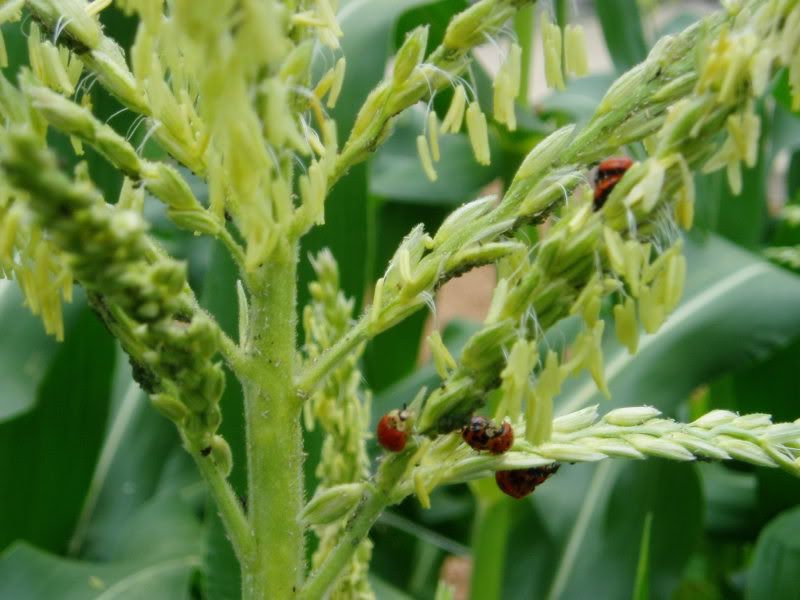After a few days of rainy weather the sweet corn has sent out it's male and female flowers (tassels and silk, respectively). The tassels drop pollen down onto the silk, each string of silk fertilizing a single corn kernel. To maximize fertilization one should always plant "blocks" of corn (as opposed to a long, singular row) because one corn plant can fertilize another. This way you will get nicely filled ears.

Bailey by the garden

First red tomato!

This corn stalk will make two ears! Probably a result of high fertility and proper spacing. Look how the peas wrap their way up the stalk. Down below their roots are all entangled and the nitrogen-fixing bacteria grown by the peas are fertilizing the corn.

And the third sister: squash. They are leaning out of the shade in an attempt to get at the light.

Aphids love to gather around corn tassels and suck at the sugary sap (they look like little green fleas that all pile on top of one another). Left unchecked, they can really do some damage because they reproduce exponentially (I'm talking billions of descendants). Good thing for me, ladybugs eat aphids (plus they are a sign of good luck!). At first we only had a few ladybugs, but now there's probably thirty or so red-bodied aphid-eating machines out there. They mate and lay their eggs near their prey so their babies have something to eat when they hatch. Oh mother nature, I guess there's always a bigger bug...
Now try to imagine if I had sprayed nasty chemicals at the first sight of those aphids. The few lady bugs would have been killed too and the aphids (which reproduce way faster) would have come back with no natural predators to keep them in check.
Aphids vs Ladybugs on a corn tassel.

2 comments:
I ove your point about organic gardening! I dont have too much time...but I did take time to read it all. :) Now if I could only keep the deer away...
more awesome photos I just love ladybugs, peace
Post a Comment